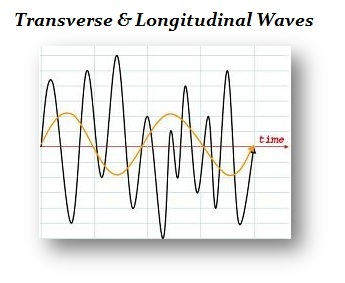Steve Bull's Blog, page 1220
December 29, 2017
All Is Not Quiet on the Syrian Front: US to Launch Another War
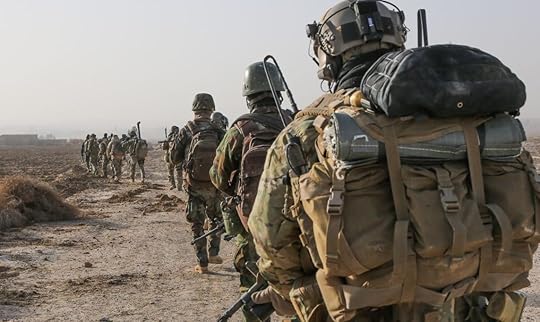
All Is Not Quiet on the Syrian Front: US to Launch Another War
This is a classic example of flip-flop policy. In November, the US promised Turkey to stop arming Kurdish militias in Syria after the Islamic State was routed. Brett McGurk, the US Special Presidential Envoy to the Global Coalition to Defeat Islamic State, explained that after the urban fighting in Raqqa was over “adjustments in the level of military support” would be made. “We had to give some equipment – and it’s limited, extremely limited – all of which was very transparent to our NATO ally, Turkey,” he said during a special briefing on December 21. In June, the US told Turkey it would take back weapons supplied to the Kurdish the People’s Protection Units (YPG) militia in northern Syria after the defeat of Islamic State.
But sophisticated weapons will continue to be sent to Syria in 2018, including thousands of anti-tank rocket launchers, heat seeking missiles and rocket launchers. The list of weaponry and equipment was prepared by US Department of Defense as part of the 2018 defense budget and signed by Trump of Dec. 12. It includes more than 300 non-tactical vehicles, 60 nonstandard vehicles, and 30 earth-moving vehicles to assist with the construction of outposts or operations staging areas. The US defense spending bill for 2018 (“Justification for FY 2018 Overseas Contingency Operations / Counter-Islamic State of Iraq and Syria Train and Equip Fund”) includes providing weapons worth $393 million to US partners in Syria. Overall, $500 million, roughly $70 million more than last year, are to be spent on Syria Train and Equip requirements. The partners are the Kurds-dominated Syria Democratic Forces (SDF). The YPG – the group that is a major concern of Turkey – is the backbone of this force.
…click on the above link to read the rest of the article…
Oil Price Scenario for 2018
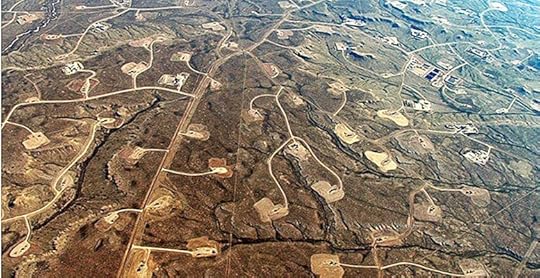 It is that time of year again where we try to forecast what the oil price will do over the coming 12 months. Last year I forecast $60 / bbl for Brent year ending 2017 and with Brent trading on $66.50 as I write I can conclude that I got lucky this year. My friend wagered on $78 and our bet this year was too close to call. My forecasting effort is based on trying to understand the supply, demand, storage, price dynamic and since this seemed to work pretty well this year I will repeat the exercise with some slight modifications.
It is that time of year again where we try to forecast what the oil price will do over the coming 12 months. Last year I forecast $60 / bbl for Brent year ending 2017 and with Brent trading on $66.50 as I write I can conclude that I got lucky this year. My friend wagered on $78 and our bet this year was too close to call. My forecasting effort is based on trying to understand the supply, demand, storage, price dynamic and since this seemed to work pretty well this year I will repeat the exercise with some slight modifications.
I have some reservations about the methodology stemming from 1) US LTO production has unpredictable impact on supply elasticity and 2) OPEC + Russia et al are withholding ~ 1.8 M bpd from the market. In effect this group will determine the oil price in 2018. If the price goes too high they may open the taps a little to maintain the price they want, whatever that may be.
[The inset image shows “shale” fracking pads in the USA.]
Disclaimer
No one has ever been able to confidently forecast the oil price that is subject to a vast array of socio-economic, geo-political and technology variables. The best we can do is to assemble some of the key data and to try and use our experience to draw some inferences about what may happen. Readers act upon the information presented here at their own risk.
Oil Price Narrative for 2018
The oil market is now subject to production constraint amounting to ~1.7 Mbpd. This has led to rebalancing of supply and demand by the end of 2017. The Brent oil price has recovered strongly since the summer to close the year at around $66.50. Last year I forecast $60 / bbl for December 2017 and therefore came close.
…click on the above link to read the rest of the article…
This Flu Season Begins the Risk of a Pandemic 2018-2019
A possible new pandemic is forming from a deadly strain of flu emerging from Australia and will be headed to the UK as the normal flow of travels would take it. Britain will perhaps be hit with the worst flu season in 50 years. Already, there are about 170,000 cases of flu reported in Australia which is more than double this season than usual.
The strain of flu is called H3N2, and the number of flu deaths in Australia over winter has not yet been released, but it’s thought to be the worst in many years. The last major flu epidemic was in the 1968 pandemic which began in Hong Kong killing more than a million people worldwide. Flu pandemics have been linked to fluctuations in climate, and new research connects the world’s four most recent pandemics to the cyclical cooling of the Pacific Ocean near the equator.
The cyclical research correlating everything reveals that the four flu outbreaks that swept the world in the past 100 years all followed periods of global cooling. These were in 1918, 1957, 1968 and 2009 (in this last instance, the H1N1 “swine flu”). When sea-surface temperatures sank abnormally low, this correlates to large flu pandemics. This cooling is associated with La Niña, a phase in a larger climate pattern. La Niña is the cool counterpart to El Niño, which is marked by unusually warm temperatures in the equatorial Pacific. It is now clear that both events alter weather patterns around the globe.
While the typical Transverse Wave cycle event would be every 22.75 years, but the Longitudinal Wave structure simultaneously exists and the complexity of these wave points to this season as turning up the risk factors for a pandemic flu season in 2018 and 2019.
Renaissance Italy Presents a Strong Case for Decentralization

Renaissance Italy Presents a Strong Case for Decentralization
Common wisdom tells us that without a clear leader and monopoly on force, chaos reigns until a new order is established.
My political theory is rooted in a single axiom that I came to independently: governments are mafia. I actually came to this conclusion in the reverse order when I was disillusioned to find that despite a great PR campaign, the southern Italian mafia was nothing more than another government.
I remember thinking that in Sicily the competition for security services created a comfortable and entertaining environment, with private security doing most of the necessary security work. The Polizia Municipale often working for the mob, and Carabinieri following them around trying to catch a dirty cop. On another trip to Italy, I spent about a month in Tuscany and I started to toy with the idea that competition in force and hierarchy, in general, was preferable.
It is not by any accident that the renaissance began in a city governed by merchants-turned-bankers.
The Medici Family
There is something honest and refreshing about the role that the Medici family played in Tuscany. They were merchants in the textile trade who turned a dime into a dollar and ended up establishing the largest bank in Europe. With influence from the guild of the Arte della Lana they were able to gain positions on the guild appointed Signoria(appointed by the gonfaloniere who was appointed by the guilds) that ruled the Republic of Florence, and eventually consolidate power in the city.
Despite the centralized influence of the Vatican, there was a true independence to the city-states and by that virtue true diversity. A one hour drive south through Greve in Chianti brings you to the former Republic of Siena, which never fell to the House of Medici until Spain offered the territory as payment of debts to the Medici Bank after an 18-month siege in 1555.
…click on the above link to read the rest of the article…
The World’s Real Nuclear Menace Isn’t North Korea
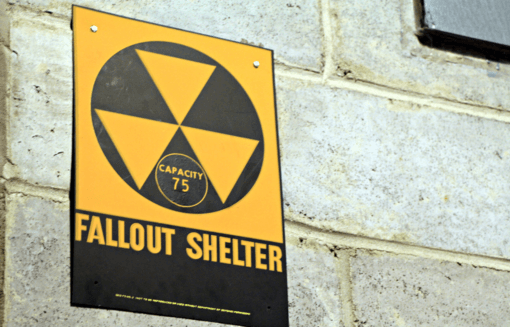
Photo by Toby Scott | CC BY 2.0
With growing speculation of war with North Korea and familiar apocalyptic rhetoric in recent times, the United States and North Korea have participated in increasingly bellicose exchanges. These recent exchanges range from President Trump calling on other nations to stop financing and trading with North Korea because it’s a “very serious nuclear menace,” redesignating North Korea as an official state sponsor of terrorism, to more North Korean nuclear missile tests and American and South Korean joint war games.
In light of the nuclear brinkmanship with North Korea bringing frequent comparisons to the Cuban Missile Crisis and discussion of hypothetical worst-case scenarios, it’s worth reviewing the United States’ record and examining whether North Korea is really the belligerent nuclear menace the world needs to liberate itself from. As critics of American foreign policy have noticed, the United States’ leaders, its media and its citizens never quite seem to recognize the full consequences of their country’s actions in other regions, or investigate its long history of conflict with North Korea.
To begin in chronological order, touring around the globe, it’s been noted by international relations scholars and historians that the Korean War is partly known as “The Forgotten War” because Americans have largely forgotten “the utter ruin and devastation” the United States inflicted upon North Korea. It’s not widely known that the United States’ own leaders have admitted to have “killed off” approximately 20% of North Korea’s population throughout the war by targeting “everything that moved.” Or that the United States destroyed more cities in North Korea than it did in Germany or Japan during World War II by dropping more bombs than it did throughout the entire Pacific Theatre.
…click on the above link to read the rest of the article…
Human Courage And Kindness Stand As Obstacles To The Void
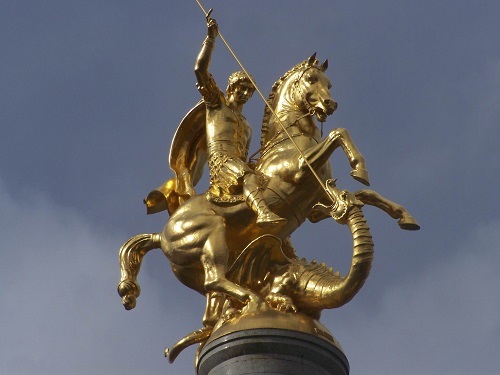
Among liberty activists, there is a rather universal consensus on what ails our nation. We understand that there is a concerted and deliberate effort by the establishment to undermine individual rights and constitutional protections. We understand that there is a coordinated effort by international financiers to destabilize our economy and siphon wealth from the middle class until it shrivels up and dies. We understand that there is an organized plan to radicalize the public along ideological lines and pit them against each other. We understand that geopolitics and regional wars are exploited to distract us from underlying issues. There is not very much debate over these realities; the evidence is overwhelming.
However, there is constant disagreement among activists on solutions to these problems, and there are several reasons why this conflict persists. Let’s examine them…
Ease Versus Struggle
This is one conflict that I don’t think many people recognize or pay much attention to, but it stands as a key weakness that derails effective action. There is a distaste among some liberty activists for the idea of self sacrifice and struggle in achieving freedom. The reality is most fights are won through persistence and force of will; there are no shortcuts to defeating tyranny. There are no secret weapons. There is only indomitable spirit. That’s it. It doesn’t matter if you have a movement of 100 people or 100 million — any goal is achievable, but only so long as you accept the cost of pain and sacrifice required.
In my years working in the movement I have seen hundreds of poorly conceived silver bullet “solutions” rise to prominence and then fail or disappear entirely. In every case there is a period of overblown excitement while practical strategies are completely ignored.
…click on the above link to read the rest of the article…
December 28, 2017
Impact of oil production decline and low oil prices: Venezuela
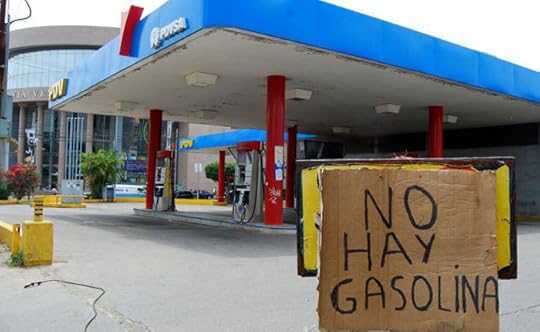
Venezuelan X’mas 2017 without petrol
https://losbenjamins.com/2017/12/venezuela-sin-gasolina-navidades/
Petrol lines are nothing new in Venezuela. But the problem is getting deeper and deeper:
Top Venezuelan refineries are running at 34% of their capacity
17/10/2017
PUNTO FIJO, Venezuela/HOUSTON (Reuters) – Venezuela’s main refining complex, hobbled by a lack of oil and maintenance issues, is down to operating at about a third of its 955,000-barrel-per-day capacity, according to a union official and documents from the state-run oil company PDVSA
https://www.reuters.com/article/us-refinery-operations-pdvsa-paraguana/top-venezuela-refineries-at-34-percent-of-capacity-union-documents-idUSKBN1CL2T0
This is part 1 of articles on how Venezuela is hit by both declining oil production and the drop in oil prices since 2014. We start with:
Oil production
Please note that the data used in this article differ from source to source. Venezuelan government reports (PDVSA) will be on the high side. No effort was made to reconcile the numbers so every graph stands on its own.
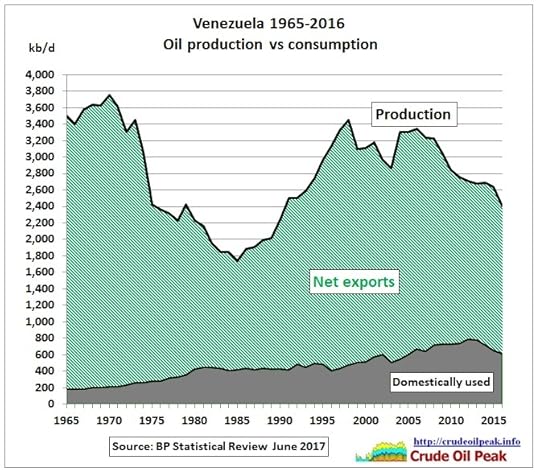 Fig 1: Double peak: drop in oil production since 2005. (PDVSA strike 2002/03)
Fig 1: Double peak: drop in oil production since 2005. (PDVSA strike 2002/03)
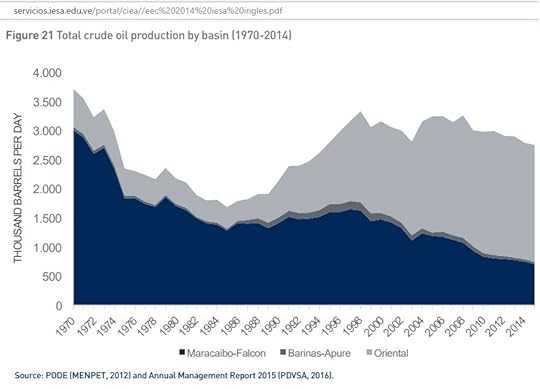
Fig 2: Venezuela crude production by basin 1970-2014 (IESA)
http://servicios.iesa.edu.ve/portal/ciea//eec%202014%20iesa%20ingles.pdf
Maracaibo
Production started 100 years ago. In 2012 Jean Laherrere calculated that discoveries were 63 Gb and cumulative production 42 Gb.
http://aspofrance.viabloga.com/files/JL_Venezuela2012.pdf
Assuming that since then another 2 Gb were produced the depletion level is 70%, making it a mature basin.
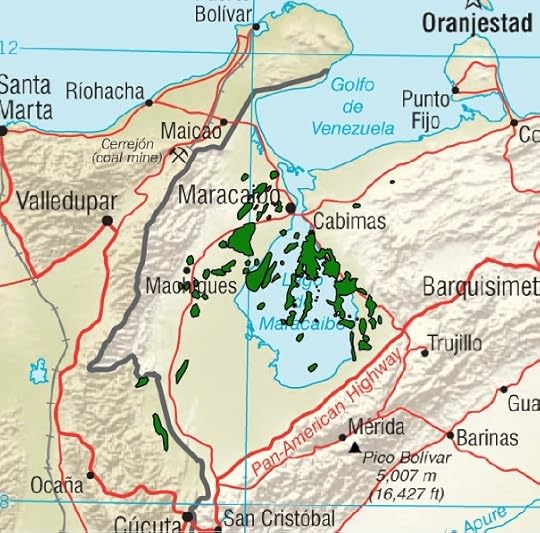
Fig 3: Oil fields in Maracaibo
http://energy-cg.com/OPEC/Venezuela/Venezuela_OilGas_Industry.html
With 1,000s of leaking, abandoned wells and corroding pipes in the lake, it is now an environmental disaster zone plagued by oil spills, subsiding coast lines and duck weed infestations (from sewage, fertilizers, industrial waste, chemicals).
…click on the above link to read the rest of the article…
Post-EMP: How to Get Out of Dodge in the Snow
 Evacuating during the harsh winter elements is already a difficult feat, but what if you find yourself in a post-EMP environment while driving and have to bug out in the snow? There is no vehicle to comfortably take you to your bug out location. For many, you will be on foot and all you have to get you through this disaster is what is in your car. Do you have the preps and the skills to make this icy trek?
Evacuating during the harsh winter elements is already a difficult feat, but what if you find yourself in a post-EMP environment while driving and have to bug out in the snow? There is no vehicle to comfortably take you to your bug out location. For many, you will be on foot and all you have to get you through this disaster is what is in your car. Do you have the preps and the skills to make this icy trek?
Honestly, ask yourself, what will you do? Well, there are some options, and we’re going to cover them. Naturally, many of these will not apply if you live in a state that doesn’t receive much snow, such as in the deserts or the more “balmy” states. Still, you may be able to take a few things away from this. Let’s do it!
How to Get Out of Dodge in the Snow
First, are your “Go/Bug-Out” bags ready? If you’re traveling somewhere together as a family and the distance is more than a few miles, emergency bags and gear should be in the vehicle for every member of the family: no exceptions! We’ve covered bags until we’re blue in the face. Here are some essential gear must-haves (just to “refresh” your memory):
Fire-starting equipment
Small first aid kit
Compass
Cold weather gear
Poncho/tarp with grommets and bungees (for a lean-to)
Three days of food (minimum)
Water
Water-purification equipment (filter, or iodine tablets)
Knife
A weapon and ammo
Radio
…click on the above link to read the rest of the article…
Reflections on 2017 – A Personal Journey

2017 was a tumultuous and extremely binary year for a considerable number of Americans. For those who thought everything was going swimmingly during the Obama years, Trump’s election wasn’t simply a shock to the system, but an extinction level event for civilization that handed the U.S. government to bunch of Putin-controlled fascists. In stark contrast, Trump’s election was seen as divine deliverance by his devoted cheerleaders and red hat wearing obsessives. Finally, someone from outside the swamp had successfully trash-talked their way into the Presidency. As such, an imminent restoration of American greatness is all but assured.
Naturally, neither one of these perspectives is remotely accurate. They’re just distinct fairytales that quarreling groups of Americans have enthusiastically embraced within an increasingly insane and divided political environment. The societal pressure to self-segregate into either passionate support for “The Resistance” or “Trumpism” was overwhelming all year and has continued to this day. I recognized this early on, and wrote about it back in February.
Here’s an excerpt from that piece, Lost in the Political Wilderness:
I think the U.S. citizenry is being afflicted by a sort of mass insanity at the moment. There are no good outcomes if this continues. As a result, I feel compelled to provide a voice for those of us lost in the political wilderness. We must persevere and not be manipulated into the obvious and nefarious divide and conquer tactics being aggressively unleashed across the societal spectrum. If we lose our grounding and our fortitude, who will be left to speak for those of us who simply don’t fit into any of the currently ascendant political ideologies?
Little did I know it at the time, but the sentiments expressed in that piece, coupled with the four-part series on Spiral Dynamics that followed, would result in profound changes to my overall outlook on life and the evolution of this website.
…click on the above link to read the rest of the article…
Is the Buildup to World War I Being Repeated for WWIII?
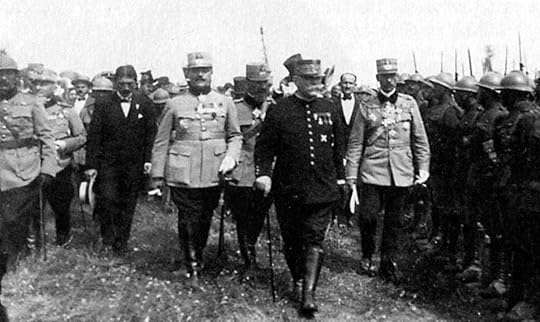
Is the Buildup to World War I Being Repeated for WWIII?
The great scholar of Turkish history, Taner Akçam, has described today’s geopolitics — the alliances and hostilities toward possibly another World War — as being not ideologically based like WWII, but instead greed-based (empire-grabbing) like WWI:
These are wars of power, influence, and control over the use of Middle Eastern energy resources and the “security issues” related to it. It is quite obvious that the sides in this war are not “those who want democracy and human rights” versus “those in favor of evil dictatorships.”
The axes that are now starting to take shape are proof of this: Saudi Arabia and Israel – openly supported by the United States (and likely Egypt over time) – are forming one alliance; Russia, Iran, and Turkey are establishing another.
A tableau reminiscent of 1918 power blocs.
Today’s alliances are modernized versions of WWI.
World War I was a mess of alliances on each of its two sides, the Central Powers, versus the Entente Powers. The aristocracies that were on the side of the Central Powers included (among others) the following: Jabal Shammar (Saudi Arabia allied with Turkey); Germany; Austria (including Croatia & Bosnia); Ukraine; Poland; Lithuania; Georgia; Turkey; Italy.
The aristocracies that were on the side of the Entente Powers included: China; Japan; Czechoslovakia; Russia; Serbia; UK; Canada; US.
Today, we instead have the West: US; UK; Saudi Arabia (UK-allied ‘Arab Revolt’ that ended in 1925 with Ibn Saud’s victory); Israel; EU led by Germany; Ukraine; Japan; South Korea; versus the East: Russia; Iran; Turkey; China.
An odd-man-out is North Korea, which will be supported by China if it stops developing its nuclear program beyond what’s needed for its self-protection (protection against repeating what had happened to Saddam Hussein and Muammar Gaddafi), but which will be opposed by China if it develops an aggressive, conquest-oriented, imperialistic, nuclear capability (which would reduce security not only for Japan and South Korea, but also for China).
…click on the above link to read the rest of the article…

